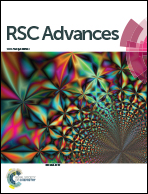Prediabetes: grounds of pitfall signalling alteration for cardiovascular disease
Abstract
Impaired glucose metabolism either in prediabetes or diabetes mellitus is one of the detrimental root causes of premature mortality throughout the world. Uncontrolled prediabetes coincides with the induction of diabetic mellitus and associated cardiovascular diseases (CVDs). Needless to mention, impaired glucose metabolism, including impaired fasting glucose (IFG) and impaired glucose tolerance (IGT), have been known individually or in combination as the prediabetic stage but by itself it is not diabetes mellitus. Impaired β-cell function, insulin resistance, increased level of free fatty acids, hyperinsulinemia and down-regulation of GLUT-4 are critical impairments during prediabetes. The vascular endothelium sustains the free flow of blood in vessels by normalizing vascular tone by releasing numerous endothelial-derived factors. However, in recent studies a marked impairment in endothelial-derived factors has been observed in prediabetes. Thus, the impaired endothelial-derived factors could make prediabetic patients more vulnerable to cardiovascular disease pathology. Nobel laureates, Robert Furchgott, Louis Ignarro and Ferid Murad (1998) discovered a novel signalling molecule, nitric oxide (NO), identified as an endothelium-derived relaxing factor. This imperative mediator has potent vasodilatory, anti-platelet, anti-proliferative, and anti-inflammatory actions in vessels. Endothelium-derived NO generation is mediated through the activation of PI3-K-Akt-eNOS-NO signalling pathways. Therefore, conspicuous destruction in PI3-K-Akt-eNOS-NO signalling has been revealed in prediabetes and renders individuals more susceptible to CVDs. Several research reports have defined prediabetes as a platform for diabetes mellitus and associated CVDs. But the molecular alteration during prediabetes is unclear; however, the signalling modulator may be an imperative issue and may open a prerequisite new vista for novel research. In this review, we have critically discussed the possible signalling alteration in prediabetes.


 Please wait while we load your content...
Please wait while we load your content...